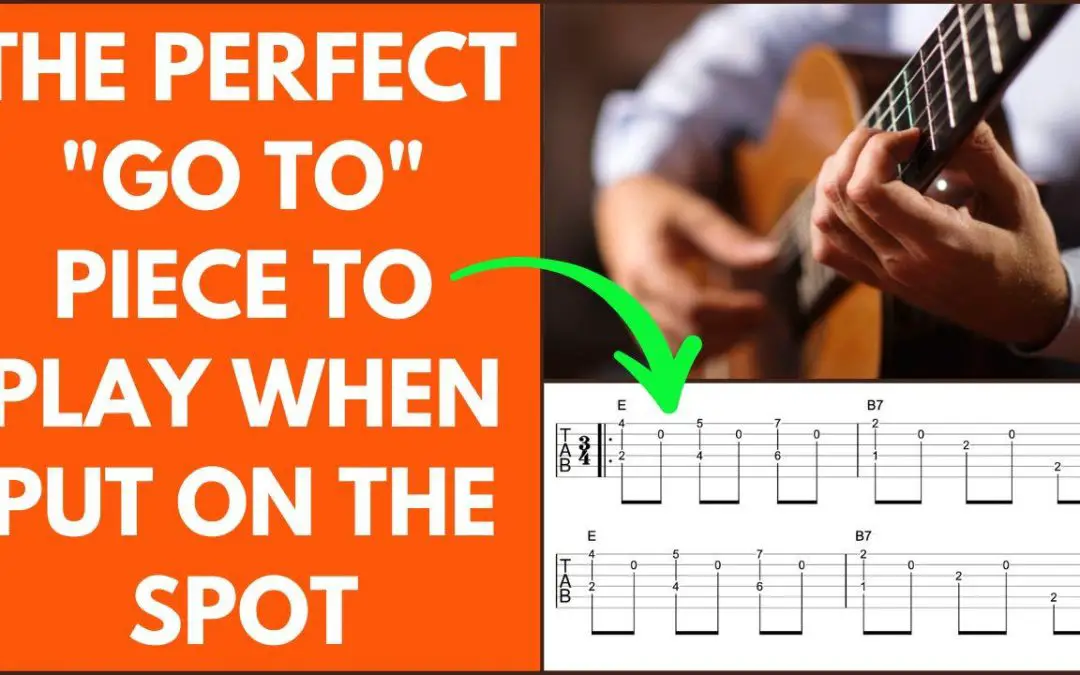Unlock the secret to becoming a guitar god in no time – mastering chords with ease! Gone are the days of fumbling fingers and frustrating practice sessions. It’s time to shred like a pro and impress everyone within earshot. So grab your trusty axe and get ready to rock and roll your way to chord mastery!
Contents
- 1 Unlocking the Mystery of Guitar Chords
- 2 Essential Techniques for Clean Chord Transitions
- 3 Deciphering Chord Diagrams for Beginners
- 4 Mastering Barre Chords with Confidence
- 5 Strategies for Enhancing Chord Memorization
- 6 Incorporating Chord Variations for Advanced Players
- 7 Practical Tips for Smooth Chord Progressions
- 8 FAQs
- 9 Rock on, Master Guitarist!
Unlocking the Mystery of Guitar Chords
So, you’ve decided to pick up a guitar and become the next rock legend. But wait, what’s this about chords? Are they some kind of secret code that unlocks the power of music? Fear not, dear reader, for we are about to embark on a journey into the mystical world of guitar chords.
First things first, let’s talk about what chords actually are. In simple terms, a chord is a combination of three or more notes played together to create harmony. Think of them as the building blocks of music, like Legos for your ears. Each chord has its own unique sound and feeling, adding depth and dimension to your songs.
Now, onto the fun part: how to actually play these magical chords. It may seem daunting at first, but with a little practice and a lot of patience, you’ll be strumming away like a pro in no time. Here are a few tips to get you started:
- Start with the basics: Learn the most common open chords like C, D, and G to get a feel for how they sound and how they fit together.
- Practice, practice, practice: Rome wasn’t built in a day, and neither is your guitar-playing skills. Set aside time each day to work on your chord transitions and watch your progress soar.
- Experiment and have fun: Don’t be afraid to try out different chord progressions and see what sounds good to you. The beauty of music is that there are no rules, so let your creativity run wild!

Essential Techniques for Clean Chord Transitions
So, you’ve finally mastered those basic guitar chords and now you’re ready to take your playing to the next level with some clean chord transitions. Well, you’ve come to the right place! Here are some essential techniques to help you nail those chord changes like a rockstar:
- Practice makes perfect, so make sure to spend some quality time switching between chords. The more you practice, the smoother your transitions will become.
- Keep those fingers close to the fretboard. Don’t let them stray too far, or you’ll end up with some messy chord changes.
Remember, it’s all about muscle memory, so don’t be discouraged if it takes a little time to get those transitions down pat. Just keep at it and before you know it, you’ll be switching chords like a pro!

Deciphering Chord Diagrams for Beginners
So you’ve decided to pick up the guitar and learn how to play some sweet tunes. Congratulations! Now, you may have come across those intimidating chord diagrams that look like ancient hieroglyphics. Fear not, brave beginner! We’re here to help you decipher these mysterious symbols and unlock the secrets to playing your favorite songs.
First things first, let’s break down the basic components of a chord diagram. You’ve got those vertical lines representing the strings of your guitar, and the horizontal lines indicating the frets. Each dot on the diagram shows you where to place your fingers to create the chord. Sounds simple enough, right? Well, buckle up because it’s about to get a little trickier.
Now, pay close attention to the numbers on the frets. These numbers tell you which fingers to use – **1** for your index finger, **2** for your middle finger, **3** for your ring finger, and **4** for your pinky. And don’t worry if your fingers start feeling like spaghetti trying to contort into weird shapes – it’s all part of the guitar player initiation process.
As you practice deciphering chord diagrams, remember to take it slow and be patient with yourself. Rome wasn’t built in a day, and neither was Jimi Hendrix’s legendary guitar skills. Keep strumming, keep practicing, and soon enough you’ll be rocking out like a pro. Now, go forth and conquer those chord diagrams with gusto!

Mastering Barre Chords with Confidence
So, you want to master those pesky barre chords, huh? Well, fear not my fellow guitarist, I am here to guide you through this treacherous journey with confidence and grace!
First things first, make sure you have a good grip on your guitar neck. A sloppy hold will only make those barre chords sound like a hot mess. Remember, you’re not trying to strangle the poor thing, just give it a firm but gentle squeeze.
Next, position your fingers in the shape of the barre chord. It’s like playing a game of finger Twister, but with music involved. Practice sliding your fingers up and down the fretboard until you find that sweet spot where all the notes ring out clear and true.
And finally, don’t get discouraged if it takes some time to perfect your barre chords. Rome wasn’t built in a day, and neither was Jimi Hendrix’s guitar prowess. Keep practicing, keep pushing yourself, and soon enough you’ll be slaying those barre chords like a rockstar!

Strategies for Enhancing Chord Memorization
Remembering chords can be a real struggle for many musicians, especially when you have to play a new song with a complex chord progression. But fear not, here are some quirky strategies to help you enhance your chord memorization skills:
- **Chunking Technique**: Break down the chords into smaller, more manageable chunks. Instead of trying to memorize the entire chord progression at once, focus on learning a few chords at a time. This way, you can digest the information more easily and prevent your brain from going into overload.
- **Color Coding**: Get yourself a pack of colorful sticky notes and assign a different color to each chord. Stick the corresponding colored notes on your instrument or on a cheat sheet. This visual aid will not only bring some color to your practice sessions but also help you associate each chord with a specific color, making it easier to remember.
- **Rhyme Time**: Create some silly rhymes or mnemonics to help you remember the chord progression. For example, “C major is like a star, G major is not that far.” Sure, it may sound a bit ridiculous, but who said learning chords had to be boring?
Incorporating Chord Variations for Advanced Players
Alright, advanced players, let’s kick it up a notch and add some spice to your chord progressions with some chord variations. It’s time to step out of the ordinary and give your playing that extra edge.
First off, let’s talk about extended chords. These bad boys take a standard triad and add some extra flavor by throwing in some extra notes. Think of it as adding sprinkles to your ice cream – it just makes it that much more delicious. Experiment with chords like the dominant 7th, major 9th, or even the elusive diminished 11th for some real pizzazz.
Next up, let’s dive into inversions. Instead of playing your chords in their traditional root position, mix it up by flipping them upside down. Not literally, of course, but by rearranging the order of the notes. This can give your progressions a whole new feel and really impress your audience.
And lastly, don’t forget about suspended chords. These babies replace the third of a chord with either the second or fourth note, creating a dreamy and ethereal sound. Give the suspended 2nd and suspended 4th chords a try and watch as your playing takes on a whole new dimension.
Practical Tips for Smooth Chord Progressions
Ready to take your chord progressions from drab to fab? Look no further! Here are some practical tips to help you smooth out those transitions and make your music sound like a million bucks.
First things first, **know your chords**. Make sure you have a good understanding of the basic chords in the key you’re working in. This will make it much easier to create smooth progressions that flow seamlessly from one chord to the next. Plus, it’ll save you from sounding like a confused amateur who accidentally stumbled onto a keyboard.
Next, **experiment with different voicings**. Don’t be afraid to mix things up and play around with inversions and alternative chord shapes. This will not only make your progressions more interesting but will also help you avoid the dreaded “cookie-cutter” sound that plagues so many musicians.
Remember, practice makes perfect! Spend time **jamming with others** and trying out different chord progressions. The more you play around with different combinations, the more natural and smooth your transitions will become. And who knows, you might just stumble upon a killer progression that becomes your signature sound.
FAQs
What are the best tips for mastering guitar chords?
Well, first things first, don’t skip finger exercises! Just like how you need to warm up before running a marathon, your fingers need some love before tackling those chords.
How can I remember all the different chord shapes?
One word: practice! Repetition is key when it comes to memorizing chord shapes. Write them down, draw diagrams, or even create mnemonic devices to help you remember those tricky ones.
What are some common mistakes to avoid when learning guitar chords?
Avoid the ”death grip” – pressing down too hard on the strings. Your fingers will thank you later. Also, try not to get frustrated if you don’t get it right away. Rome wasn’t built in a day, and neither was Eric Clapton’s guitar skills.
How can I make practicing guitar chords more fun?
Play along with your favorite songs! Pick tunes that you love and challenge yourself to play along with them. It’ll make practicing feel less like a chore and more like jamming out with your favorite band.
Any advice for beginners who are struggling with mastering guitar chords?
Don’t give up! Every guitarist, from Jimi Hendrix to Taylor Swift, started out as a beginner struggling with those pesky chords. Keep at it, and before you know it, you’ll be the one people are asking for advice on mastering guitar chords!
Rock on, Master Guitarist!
Congratulations on taking the first step towards mastering guitar chords with ease! Remember, practice makes perfect, but a little humor never hurt either. So, keep strumming, keep learning, and most importantly, keep rocking out like the star you are! Until next time, keep those fingers nimble and those chords in tune. Happy jamming!



